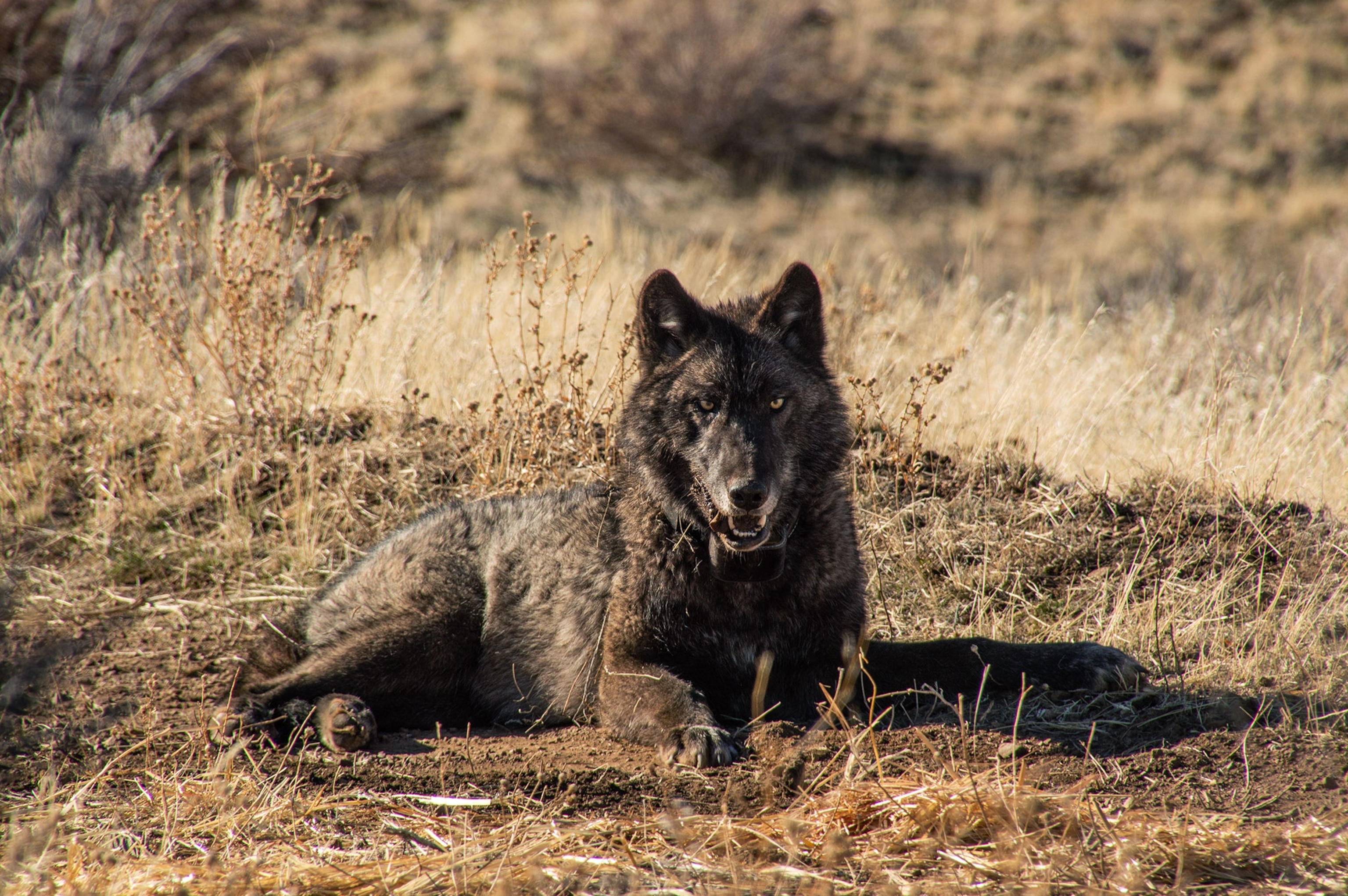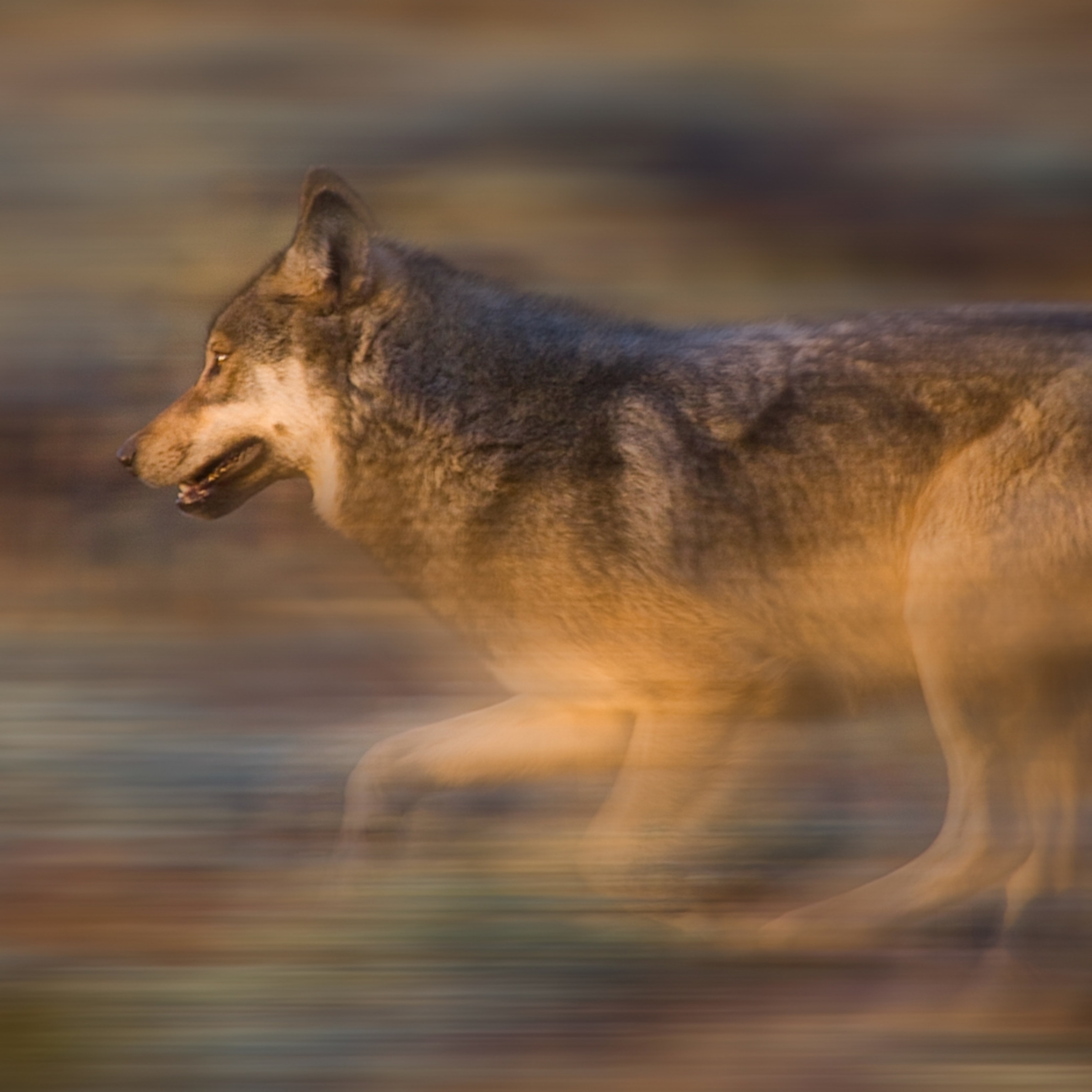The comeback of California’s gray wolves just took a tragic turn
The return of the iconic predators to the Golden State has been a quiet success story—but this month, state officials announced that they euthanized part of a pack that relied on killing cattle for food.

For the first time in over a century, California wildlife officials have taken the drastic measure of legally killing four gray wolves after tensions with local ranchers reached a crisis point.
Earlier this month, the California Department of Fish and Wildlife captured and euthanized a breeding pair after months of complaints from ranchers over numerous livestock kills in a remote region of the Sierra Nevada mountain range known as Sierra Valley. The ultimate goal, according to the department, is to completely remove a seven-member pack called Beyem Seyo, one of 10 packs roaming the state. Two other Beyem Seyo wolves were also killed, and the agency plans to capture and relocate the remaining members to a wildlife sanctuary.
This particular pack has killed at least 87 cattle over the past seven months, according to Fish and Wildlife director Charlton H. Bonham. For comparison, that is more livestock deaths by wolves in one valley than ranchers reported last year in the entire state of Oregon, which hosts at least 200 of the animals.
(After returning to Yellowstone, wolves have helped stabilize the ecosystem)


The news comes just 14 years after the widely heralded return of wolves to the state, which now has a growing population of 50 individuals. Gray wolves, which are typically gray or black in color and average around 90 pounds for males, typically feed on large prey like elk, moose, or deer. As an endangered species, California wolves are protected by both state and federal laws. Yet after months of unsuccessful efforts to deter the Beyem Seyo wolves with non-lethal means—including hazing, drones, and 24-hour patrols—Bonham reluctantly concluded there was no other option. “This is pretty somber,” Bonham says. “But given the habituation of this Beyem Seyo pack, the scale of it, we think that jeopardized the long-term recovery effort.”
While other California packs have killed livestock on occasion, the Beyem Seyo pack seems to have been subsisting mainly on cattle rather than wild prey. According to National Geographic Explorer Arthur Middleton, it’s a behavior seldom seen in the 30 years since wolves returned to the American West, beginning with a celebrated reintroduction effort in Wyoming’s Yellowstone National Park in 1994. Part of the problem, explains Middleton, whose California Wolf Project tracks the state’s 10 packs and studies their prey habits, is that the Sierras do not provide the same kind of pristine wilderness found in the Greater Yellowstone area.

Northern California was colonized by descendants of wolves from the northern Rockies who wandered west into Oregon, and then eventually made their way across the border into the forests of the northern Sierra Nevada. They found a landscape that was very different from the one in which their ancestors thrived. The national forest that covers much of the Sierras has fewer deer and elk for wolves to prey upon than the wilderness areas of the northern Rockies. It also has more people, and, crucially, more cattle.
(The 'most famous wolf in the world' lived hard—and died tragically.)
Middleton expects wolf numbers to continue to expand, and conflicts to continue to arise. From this perspective, culling wolves on behalf of cattle may have been inevitable. “Every jurisdiction that has dealt with this has settled on some mix that has involved non-lethal methods and lethal methods,” says Middleton, a biologist at the University of California. “This is California moving into a new era.”
In the northern Rockies, where the wolf population is much larger—close to 2,500 animals—hundreds of wolves are killed every year to protect livestock. Pam Flick, head of the California office of Defenders of Wildlife, said she hopes it will not come to that in her state. “Circumstances and population numbers are very different between the northern Rockies and California, just as wolf management should be,” says Flick, whose organization has worked with ranchers in the Sierra Valley on non-lethal deterrence methods, “at least while wolves remain endangered here in the Golden State.”
She believes the removal of the Beyem Seyo pack could have been avoided—if action had been taken sooner. By the time targeted deterrence efforts began last summer, the pack had already been preying on cattle in the area for 18 months, and a pattern had developed, with young wolves learning from older pack members to kill livestock.
(Is this really a dire wolf? How the de-extinct pups compare to the real thing.)

California wildlife officials and ranchers will in all likelihood have the opportunity to put Flick’s theory to the test in the Sierra Valley, since wolves are likely to return. Another pack dens in an area north of the valley, and young wolves regularly leave their natal packs in search of mates and unoccupied territories to make their own. Local rancher Rick Roberti, who also heads the California Cattlemen’s Association, says he spotted a wolf he didn’t recognize near his property in the last few days, possibly dispersing from another pack.
For his part, Roberti is skeptical that non-lethal methods will ever work in Sierra Valley, which is an enormous high country basin surrounded by national forest land. “It’s so vast,” he says. “Some of those things will work for small producers that have a few acres, but when you run 6,000 to 10,000 acres, there’s just no way.” Roberti doesn’t blame the wolves, because there just isn’t that much wild game in the hills and mountains that surround the valley. “What else are they going to eat?” he says. “I guess the question would be, is this habitat really suitable for them?”
Bonham, the Fish and Wildlife director, sees the conflict in Sierra Valley as an instructive moment for a state still learning how to cope with wolves. “The future of wolves in California is not uncertain,” he said. “What’s uncertain is how coexistence is going to evolve.”







